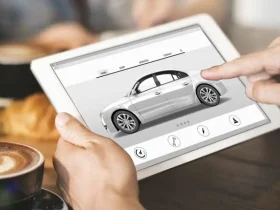Headlights or dashboard lights that flicker may be both annoying and worrisome. Even while the problem may not appear serious, it often points to a larger issue with the electrical system of your car. You may prevent future, more expensive repairs by taking care of this problem as soon as possible. The potential reasons of flickering lights are broken out below, along with solutions.
Examine the battery
The main source of power for the electrical systems in your car is the battery. A weak or failing battery might be the cause of your car’s flashing lights. An aged battery, weak connections, or corroded terminals may make it difficult to provide steady power. Examine the battery terminals first for corrosion or filth, and then clean them if required. Have the battery checked to see whether it has to be replaced if the problem continues.
Examine the alternator
While the engine is operating, the alternator is in charge of powering electrical components and charging the battery. Flickering lights might result from irregular electrical output caused by a malfunctioning alternator. It’s probably an alternator problem if you see any other symptoms, including a battery warning light on the dashboard or trouble starting the vehicle. The alternator may be tested and, if necessary, replaced by a professional. Choosing the Auto Repair in Bakersfield, CA based service would be perfect here.
Check the Wiring
Flickering lights in cars are often caused by loose or damaged wiring, which interferes with the steady flow of power. Wires may eventually corrode from exposure to moisture, shred from wear and tear, or separate from their terminals. These problems often result in sporadic power supply, which dims or flickers lights. To fix this, look for obvious damage, such cracks, corrosion, or loose connections, in the wiring that connects your battery, alternator, and lights. If any flaws are discovered, correcting or replacing the damaged wires as soon as possible will restore normal electrical operation and stop more problems.
Examine the lightbulbs
Flickering lights may sometimes be limited to a particular location because of a malfunctioning or worn-out lightbulb. This may occur if the filament of the lightbulb is broken or approaching the end of its useful life. Examine the impacted light first to make sure the bulb is firmly in its socket and free of obvious damage, such as discoloration or a broken filament. Intermittent flashing may also be caused by a loose connection. Replace the bulb with a new one that satisfies the manufacturer’s specs if it seems dull, flickers, or isn’t working. Installing it correctly guarantees peak performance and avoids flickering problems in the future.
Seek Expert Assistance
See a qualified technician if troubleshooting doesn’t fix the flashing lights. In order to determine and address the underlying reason, they may conduct a thorough examination of your car’s electrical system. Postponing repairs might make the problem worse and need more expensive solutions.
To sum up, flickering automobile lights often indicate a more serious electrical problem. You can guarantee safe driving conditions and restore your car’s operation by taking quick, deliberate action to fix the issue.











